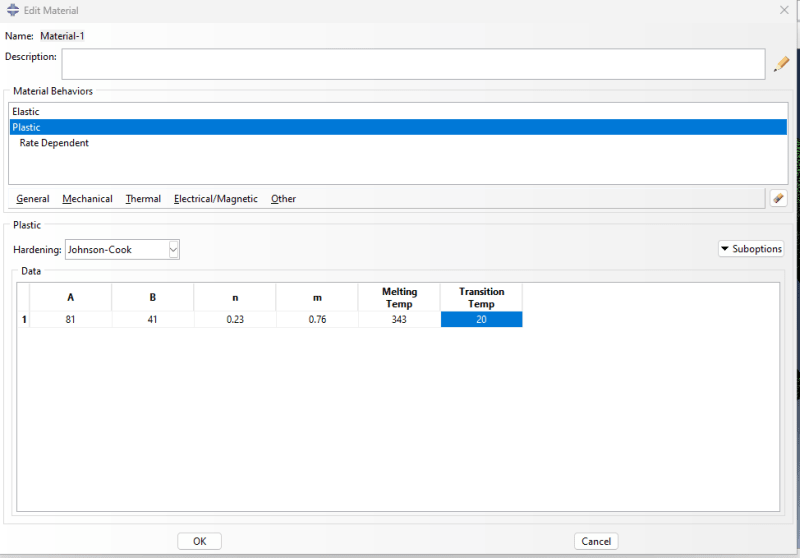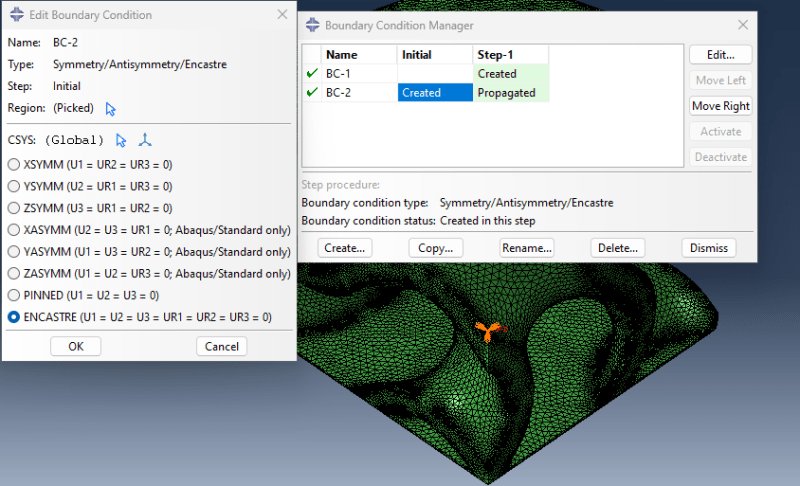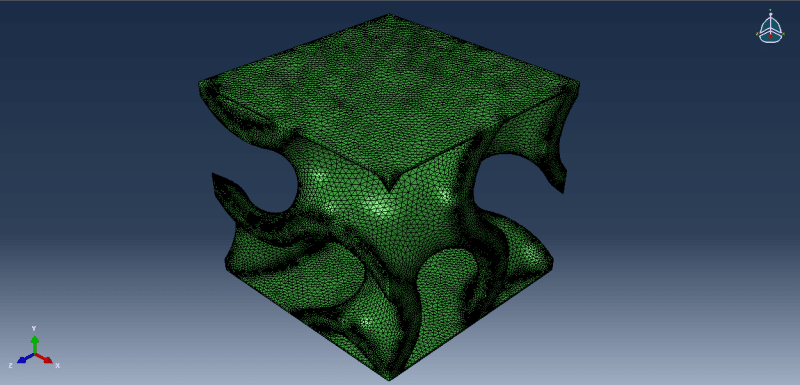Kunal Gide
Student
- Oct 18, 2023
- 19
Hello,
I am simulating a compression test on a gyroid lattice structure in abaqus cae. The geometry has solid surfaces on top and bottom and in between there is a gyroid lattice structure. The model is 10 mm in LXBXH.I applied a displacement of 2 mm on the top surface and fixed the bottom plate with encastre to replicate similar conditions to experimental compression testing. I have given material property only in the elastic region with E= 3.5 GPa and v= 0.378. The mesh size is 0.12 mm. The simulation runs and completes. Can anyone help me in how I can find the values of Young's Modulus or Stiffness of this structure?
Thank you.
I am simulating a compression test on a gyroid lattice structure in abaqus cae. The geometry has solid surfaces on top and bottom and in between there is a gyroid lattice structure. The model is 10 mm in LXBXH.I applied a displacement of 2 mm on the top surface and fixed the bottom plate with encastre to replicate similar conditions to experimental compression testing. I have given material property only in the elastic region with E= 3.5 GPa and v= 0.378. The mesh size is 0.12 mm. The simulation runs and completes. Can anyone help me in how I can find the values of Young's Modulus or Stiffness of this structure?
Thank you.





